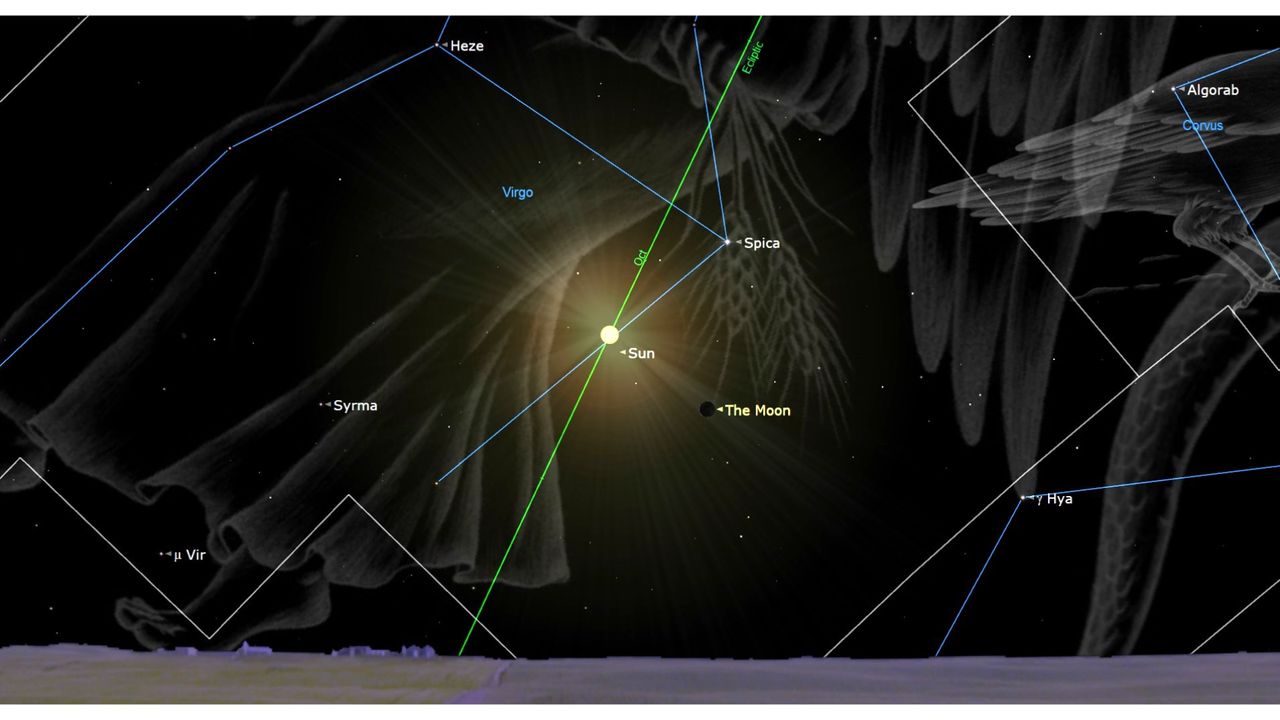Science
Stargazers Prepare for October 2025’s New Moon and Antares Occultation

A new moon is set to grace the skies on October 21, 2025, heralding a spectacular astronomical event for stargazers. The event will coincide with the peak of the Orionid meteor shower, offering a rare opportunity for those in South America and the Falklands to witness the three-day-old moon pass in front of the red supergiant star, Antares.
The new moon phase occurs when the sun and moon align, causing the moon to appear invisible from Earth. According to the U.S. Naval Observatory, this month’s new moon will reach its peak at 8:25 a.m. Eastern Daylight Time (12:25 UTC) on October 21. While this new moon will not result in a solar eclipse, observers will be treated to the occultation of Antares on October 24.
Occultations, where one celestial body passes in front of another, are not uncommon, but visibility can be limited. The moon’s shadow is relatively small compared to Earth, making it essential for observers to be in the right location to witness such events. The moon’s position will vary based on the observer’s location, with differences of up to two degrees.
In New York City, for example, sky watchers will not see the occultation as the moon will be positioned below Antares, which will be below the horizon at that time. Conversely, in Ushuaia, Argentina, the occultation will begin at 10:35 p.m. local time. From this vantage point, the moon will appear in the low southwestern sky, approximately 15 degrees high, obscuring Antares at its upper right quadrant. The star will reappear on the left side of the moon at 11:23 p.m., positioned about 9 degrees above the horizon. Moonset will occur at 1:02 a.m. on October 25.
Similarly, in Punta Arenas, Chile, the occultation will start at 10:37 p.m. on October 24, with Antares disappearing behind the moon’s upper right quadrant and reemerging at 11:28 p.m. The moon will begin the occultation at an altitude of 15 degrees and conclude it at about 9 degrees high.
Visibility of Planets During October Evenings
For those unable to witness the occultation, several planets will still be visible in the night sky throughout late October. In locations such as New York City, Saturn will rise at 5:54 p.m. local time on October 21, reaching an altitude of 27 degrees above the southeastern horizon by 7:30 p.m.. It will transit at 10:47 p.m., ultimately setting at 4:36 a.m. on October 22. Saturn resides in Aquarius, a relatively faint constellation, making it more prominent in the evening sky.
Jupiter will also be visible, rising at 11:16 p.m. on October 21 and transiting at 6:37 a.m. on October 22, reaching an altitude of 71 degrees. Positioned in the constellation Gemini, Jupiter will appear just below and to the right of Pollux, the second-brightest star in that constellation. Observers can distinguish Jupiter from stars, as planets shine with a steady light while stars twinkle.
Venus will make an appearance just before dawn, rising at 5:37 a.m. on October 22. As the third-brightest object in the sky, Venus will be visible until shortly before sunrise at 7:15 a.m.. By 7:00 a.m., it will be approximately 14 degrees above the eastern horizon.
In the Southern Hemisphere, the visibility of these planets will be enhanced, especially as sunset times extend with the approaching summer. In Santiago, Chile, Saturn will rise at 5:17 p.m., with sunset occurring at 8:00 p.m.. By 8:30 p.m., Saturn will be about 38 degrees high in the northeast, making it easier to observe.
Stars and Constellations to Watch
As mid-northern latitudes transition into late October, the summer constellations—Sagittarius, Ophiuchus, and Scorpio—will begin to fade from view, making way for autumn stars. By 8:00 p.m., the Summer Triangle, composed of the stars Vega, Altair, and Deneb, will be prominent near the zenith.
In the Southern Hemisphere, the Southern Cross will be visible low in the south-southwest, with its brightest star, Acrux, just 13 degrees above the horizon. Observers can find other notable celestial features, including Achernar and the constellation Phoenix, in the same sky region.
As October unfolds, both planetary visibility and the anticipated occultation of Antares will provide exciting opportunities for stargazers across the globe. Whether in Santiago or Ushuaia, celestial events promise to captivate and inspire those who look to the night sky.
-

 Science2 weeks ago
Science2 weeks agoIROS 2025 to Showcase Cutting-Edge Robotics Innovations in China
-

 Politics2 weeks ago
Politics2 weeks agoJudge Considers Dismissal of Chelsea Housing Case Citing AI Flaws
-

 World2 weeks ago
World2 weeks agoBravo Company Veterans Honored with Bronze Medals After 56 Years
-

 Top Stories2 weeks ago
Top Stories2 weeks agoIndonesia Suspends 27,000 Bank Accounts in Online Gambling Crackdown
-

 Lifestyle2 weeks ago
Lifestyle2 weeks agoStone Island’s Logo Worn by Extremists Sparks Brand Dilemma
-

 Health2 weeks ago
Health2 weeks agoStartup Liberate Bio Secures $31 Million for Next-Gen Therapies
-

 Sports2 weeks ago
Sports2 weeks agoMel Kiper Jr. Reveals Top 25 Prospects for 2026 NFL Draft
-

 Health2 weeks ago
Health2 weeks agoTop Hyaluronic Acid Serums for Radiant Skin in 2025
-

 World2 weeks ago
World2 weeks agoHoneywell Predicts Record Demand for Business Jets Over Next Decade
-

 Lifestyle2 weeks ago
Lifestyle2 weeks agoMary Morgan Jackson Crowned Little Miss National Peanut Festival 2025
-

 Politics2 weeks ago
Politics2 weeks agoNew Jersey Voters Urged to Register Ahead of November Election
-

 Sports2 weeks ago
Sports2 weeks agoYamamoto’s Mastery Leads Dodgers to 5-1 Victory in NLCS Game 2









